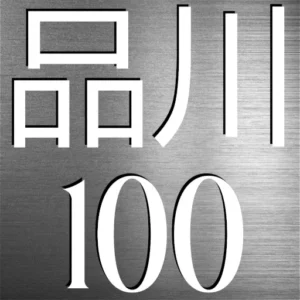Honsenji Temple’s Bell – Edo-Era Bronze Preserved in Shinagawa
Honsenji Temple (品川寺, Hōsen-ji) in Minami-Shinagawa is a Tendai Buddhist temple with historical roots in the Shinagawa-shuku post town. Its temple bell, or bonshō (梵鐘), is designated as a Tangible Cultural Property by the Tokyo Metropolitan Government.
The bell was cast on September 18, 1657 (明暦3年), under the command of 藤原村長 (Fujiwara Muranaga), who was also known as 京都三条大西五郎左衛門尉 (Kyoto Sanjo Onishi Gorōzaemon-no-jō). The bell bears the inscriptions of the titles of the three Tokugawa shoguns (東照宮, 台徳院殿, 台献院殿) and the six Six Kannon Bodhisattvas (聖 Shō, Batō, 千手 Senju, 十一面 Jūichimen, 准胝 Juntei, 如意輪 Nyoirin, 馬頭 Batō.) The text of the “Universal Gate Chapter” (普門品) of the Lotus Sutra is also engraved on the bell.
Lost and Returned to Honsenji
Following its display in France at the Paris World Exhibition in 1867 and subsequently in Austria at the Vienna World’s Fair in 1873 its whereabouts became unknown. But in 1919 Ishimaru Yuzo , head of the Ministry of Education’s curatorial department, found out that that the bell was in the collection of the Ariana Museum in Geneva, Switzerland. The bell returned from its lengthy European tour on May 5, 1930 . A return ceremony was held at the temple attended by the temple’s chief priest and his friend, the famous haiku poet Takahama Kyoshi. To commemorate the 60th anniversary of the bell’s return, a monument inscribed with one of Kyoshi’s haiku was erected at the entrance to the bell tower in 1990. Every year on May 5, a “Bell Memorial Haiku Meeting” is held.
🙏 Temple Notes
- Sect: Tendai Buddhism
- Principal Deity: Fudō Myōō (不動明王)
- Founded: At least by the Kamakura period (13th century)
- Major Feature: Nationally designated Important Cultural Property bell (cast in 1657 (明暦3年))
- Cultural Role: Pilgrimage site, part of the Tōkaidō historical network, and guardian temple of Shinagawa
🧭 Visitor Information
Address: 3 Chome-5-17 Minamishinagawa, Shinagawa City, Tokyo 140-0004
Best time to visit: Any time of year – quietest on weekday mornings
Admission: Free
Official Site
Where is it?
| what3words | ///nitrate.tens.kick |
| latitude longitude | 35.6097651 139.7409441 |
| Nearest station(s) | Aomono-yokochō (Keikyū Line) |
| Nearest public conveniences | Aomono-yokochō station |
Show me a sign.

Triple sign. As new.
Withervee says…
This bell is old-school Edo: full of grace, history, and metal. You won’t hear it ring, but you’ll definitely feel its presence.
Site Character
- Lifestyle 生活 (Seikatsu): ❌
- Historical Significance 歴史 (Rekishi): ✔️
- Atmosphere/Natural Features 風土 (Fūdo): ✔️
Who in their right mind would vote for this?
- Temple historians
- Conservation enthusiasts
- Soundscape lovers
- Passersby on the Tōkaidō
- Urban monks
Further reading
While you’re there…
Take a few steps over to Kaiunji Temple to learn about Sentaikōjin, or head north to visit Shinagawa Shrine. This part of Minamishinagawa is rich in layered Edo history.

